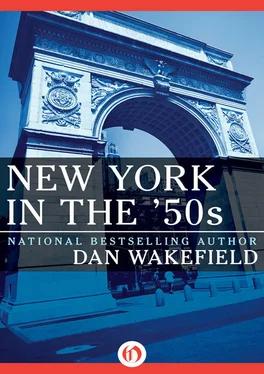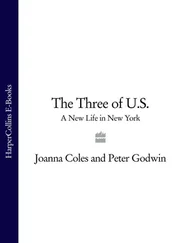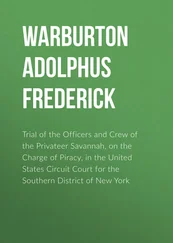For David Amram, a pioneer of racial and musical freedom in the fifties, the coming of the Beatles—and with them a revolution in pop music that rang changes through the whole culture—was not the sound of liberation that it seemed to many. “When the Beatles came to America, suddenly music took on a whole different picture. There were no black people, not just in the Beatles but in the new imitative groups throughout the country. All the time all of us spent in integrated bands, even in the South, risking our lives, and then suddenly with the Beatles came these all-white groups. It was almost as if the music industry and media gave a totalitarian answer to the miracle of the fifties. The whole fifties coming together of poetry, music, and arts looked as if it might be squashed. A lot of us were told we were passé. There was a high level of recording techniques—sound reproduction and amplification became arts. The counterculture of the sixties hooked in with the music industry, a colossal amount of money could be earned by musicians in their twenties. It began a new era—a decade of greed and narcissism.”
A lot of things were changing by 1964, and I wasn’t the only one who was leaving New York around that time. On April 24 of that year, when I was at Harvard, I got a letter from Joan Didion;
Dear Dan,
Mainly I’m writing to ask if you (or anyone you know up there) need an apartment. We rather suddenly decided to go to Los Angeles for 6 or 7 months, starting June 1, and want to sublet this place to somebody we know and leave furniture, china, linens, silver, everything.…
For six months I am going to have a tan and a Thunderbird and work very hard at talking to people and not being my own creepy self. Suspecting accurately that my entire image of our life in Los Angeles is based vaguely upon “A Star Is Born,” John has vetoed a house at Malibu, but I am holding fast on a pool. I don’t know exactly how we’ll like it there, actually, but he was sick of Time and I was sick of New York, so he just took this leave of absence until Christmas. I am supposed to finish a novel and he is supposed to finish some diverse projects and we are both supposed to Think Things Over. An unsubsidized Neiman is what we had in mind. (That is probably not the way Neiman is spelled. It looks suspiciously as if it should be followed not by “Fellowship” but by “Marcus.”)
Love
From
Joan
In her classic essay on leaving New York, “Goodbye to All That,” Joan wrote that on her first trip there she spent the first three days talking long distance to her boyfriend, whom she told she could see the Brooklyn Bridge from her window, and was going to stay for only six months, then she adds, “As it turned out, the bridge was the Triborough, and I stayed eight years.”
In the letter she wrote me, she said John had vetoed a house in Malibu, and they’d planned to stay for six months. As it turned out, they later bought a house in Malibu, and stayed in L.A. for twenty years. Oh yes, and they wrote the original script that became the new version of the movie A Star Is Born , with Barbra Streisand and Kris Kristofferson.
“For the first three years in L.A. we kept our apartment on East 75th Street,” Joan tells me now, “even though it was a great irritation—the subletters never paid the rent.”
Other friends of mine kept their apartments when they first left the city, which enabled them to still think of themselves as New Yorkers and believe their move away from it could only be temporary. “The Reporter sent me to Washington in ’61,” Meg Greenfield says, “and I thought I’d just be gone for a couple of months. I flew to New York on the shuttle every Friday afternoon—it cost $16 then—and went back on Monday morning. I found it wasn’t so easy to leave. When I first got to Washington, I was part of a little group of displaced New Yorkers, and we all bitched about Washington. After three years, I finally gave up my New York apartment, in ’64, and rented a house. I went to the Post in ’68 when The Reporter closed down.”
I didn’t try to keep my own apartment in New York, but turned it over to Robert Phelps, who magically transformed it from a bare, dusty, cluttered Village pad to a warm, bright, book-lined haven that surely would have pleased Henry James. When I went back to visit, I envied the way he’d made it the kind of place I’d always wanted to live in, but I didn’t yearn to move back. I had rented half of that converted ice house by di Giovanni’s pond in New Hampshire before I got the Nieman, and decided I could use it on weekends, then move in permanently when the fellowship year was over.
My “back to the land” dreams lasted only a year, but on the Nieman I discovered Boston, especially Beacon Hill, and I also made a connection with the new editor of The Atlantic Monthly , Robert Manning, who soon became a friend. The Atlantic under Manning gave me a pleasant and stimulating journalistic and literary base (with an office of my own in the beautiful old building at 8 Arlington Street), and I became an official part of the magazine as a contributing editor from 1967 until it changed ownership in 1980.
The extra good fortune of connecting with Seymour Lawrence at his independent publishing office on Beacon Street gave me the right publisher for the novel I finally finished in 1969 ( Going All the Way came out the following year), and I signed up with Sam for the next three novels, completing the solid and congenial professional home I found in Boston and on the Hill. Except for two temporary displacements in Hollywood, Boston has served as headquarters and seemed like home ever since.
I made occasional trips to New York on the train and the shuttle, but they became less frequent. I’d go there for only two or three days, so I didn’t have time to keep up with all my old friends. I started losing touch and even losing track of some. Sometimes I had the feeling that Joan Didion expressed in “Goodbye to All That,” when she went back to New York and found “many of the people I used to know had moved to Dallas or had gone on Antabuse or had bought a farm in New Hampshire.” I was the one she was talking about in New Hampshire, but I didn’t buy the place by the pond, I only rented, and by then I had left and moved to Beacon Hill.
The cultural shift to the West had drawn the English writer Sarel Eimerl to San Francisco, though he was later to join our free-lance philosopher friend from the Village, Art “the Rug” Bernstein, in the new urban mecca of the hip, Seattle. Meg Greenfield was in Washington, the Dunnes had defected to L.A., Sam Astrachan had gone to live in the south of France, Ivan Gold and his wife and child came up to settle in Boston, and so did another novelist from the Village days, Richard Yates. Even before I got there, Cambridge had claimed Justin Kaplan, whom I met through C. Wright Mills when Kaplan was a young editor at Simon & Schuster, before becoming a Pulitzer Prize—winning biographer of Mr. Clemens and Mark Twain . He and his novelist wife, Ann Bernays, made their Cambridge living room the most active literary salon north of Elaine’s, starring John Updike and sometimes, up from Connecticut, the surprisingly social Annie Dillard, who seemed as much at home at a cocktail party as at Tinker Creek.
When I went to New York, I usually stayed at the Village apartment of Ted “the Horse” Steeg, who had camped out on the floor of my basement apartment on West 77th Street when he arrived fresh from Indianapolis in 1955. I hung around with Ted in the Village or went uptown for business or editorial meetings with Harvey Shapiro at The New York Times Magazine or Art Cooper at GQ or for tea at the Plaza with Jane Wylie (I had switched from the daiquiris that got me through the Nieman interview).
Читать дальше












